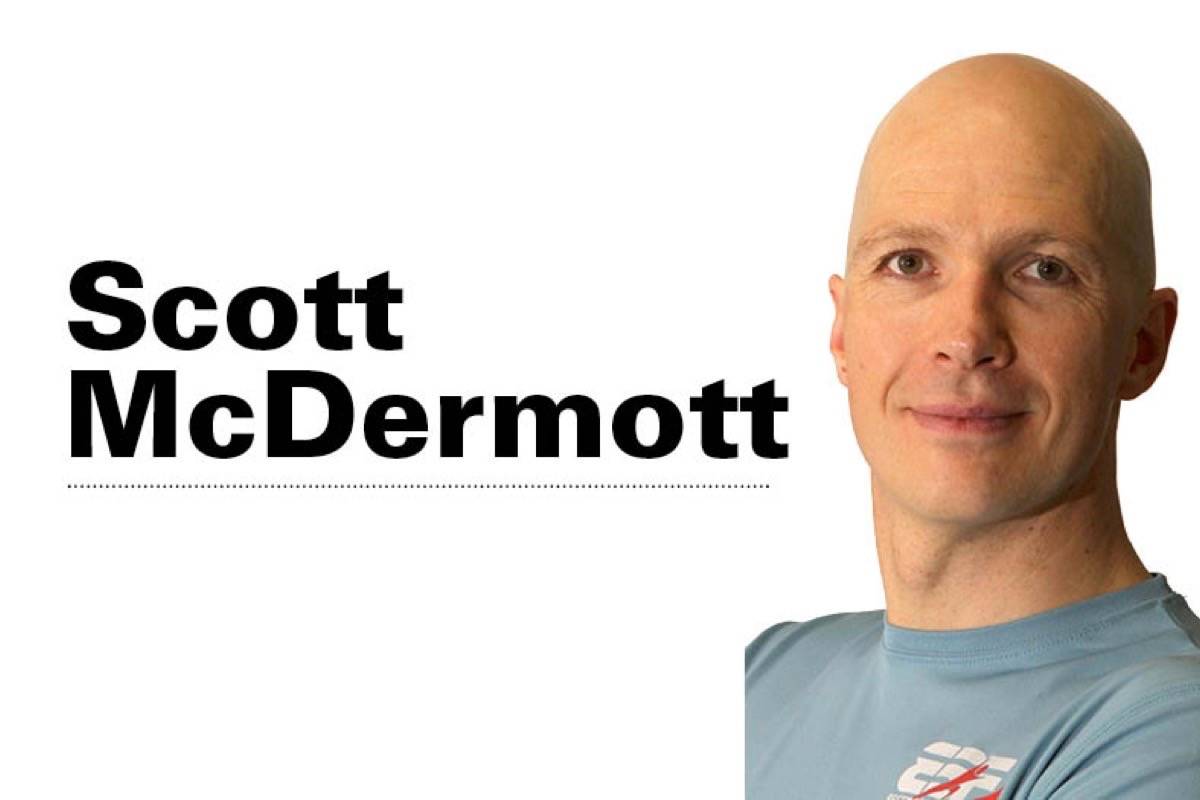This seems simple, it really does, but most people do it incorrectly or not enough.
Come on, everyone breathes! True, but as someone who has spent the past four days re-learning to breathe properly, I have to say most of us are not doing it well.
This is probably one of the most amazing hidden benefits of exercising, that of actually breathing properly by necessity.
We spend so much of our lives so hunched over in front of a computer or a cell phone or a desk full of paper.
In that position, our rib cage is restricted and reduced, leading to less deep breathing.
That position further restricts the stomach’s ability to expand and contract, leading again to shallow breathing.
Even walking around, most people tend to hold their tummy in due to social pressures of looking a certain way, and this too, restricts breathing.
As a 20-year trainer, one of the things I need to constantly remind clients to do is breathe. It is so common to hold or limit breathe when learning a new skill, yet it is so important.
What is the scientific process of breathing?
We all know it’s important, but what actually happens when we breathe? The basics: you draw in a breath which involves your ribcage, belly and diaphragm.
Your diaphragm is like a trampoline in your belly region that pushes your organs down a bit to make room for your lungs as long as your belly moves outward.
Breathing out actually doesn’t require effort, it just happens when the diaphragm and ribs move back to neutral.
That itself is a clue to the importance of actually ‘taking’ a deep breath – it will NOT happen on its own! We breathe in oxygen and nitrogen and trace gases and inside our lungs red blood cell proteins called hemoglobin gather oxygen and shuttle it back to the red blood cells which carry it around our body to wherever it is needed.
When we breathe out, we express carbon dioxide and waste gases.
We breathe in and out around 20,000 times a day but there can be an issue of quality vs. quantity. Of course things like lung disease, asthma, allergies and smoking all affect this.
What happens when we do not breathe enough?
We all breathe enough to stay alive obviously, but when we ‘shallow breathe’ we are not getting rid of the bull round of C02, nor are we taking full opportunity to maximize oxygen intake to feed our muscles and organs.
This can result in elevating stress, reducing energy levels (tiredness) and a host of other things including insomnia, panic attacks and dizzy spells.
Basically the organism of your body is not getting enough oxygen to properly metabolize fuel and waste and becomes stressed. People with sleep apnea have all sorts of health problems and fatigue from not sleeping well – all entirely related to breathing.
I have been in Germany for the past four days working with a specialist that helps athletes who have had a bad crash, recover from injury and return to optimal function.
In the most basic sense, I have been laying on a therapy bed re-learning how to breathe for nearly a week.
Since I broke several ribs, my ribs do not expand well on the left side. Add to that the broken shoulder as well as reduced capacity to move and my body has simply learned to deal with breathing less efficiently, making me tired.
It is likely that you did not crash, but as a society our intercostals (muscles between our ribs) become tight, restricting breathing. We have forgotten to belly breath and our shoulders are rounded forward (kyphosis) from all the office and computer/phone work. We need to open back up!
If you ever want to see a really great breather, go watch a newborn baby breathe.
Their belly sticks out, chest expands without restriction and their whole upper body gets into it! We need to get back to that to some degree and even just putting our body through challenging exercise does it on its own.
Here is a little piece of what I have learned this past week.
Lay on your back, knees bent at 90 degrees, with your feet the same width as your hips.
Start with some deep breaths and focus on letting your belly rise and grow big on the ‘in’ breath.
After a few minutes, when breathing in, start to push your shoulders down and squeeze your shoulder blades closer, sticking your chest out, belly out, as you pull air in.
Really work to fill your lungs and stretch this!
Its actually hard to do and tiring, well, at least it was for me. Then round your shoulders up a bit, belly and chest go down as you breathe out. Five minutes a day of that and I bet you will feel fresh and amazing!
P.S. – If your legs begin to shake a little, that is good. Perhaps your parasympathetic healing response is working already!
I just saved you a trip to Germany.
Scott McDermott is a personal trainer and the owner of Best Body Fitness in Sylvan Lake.



